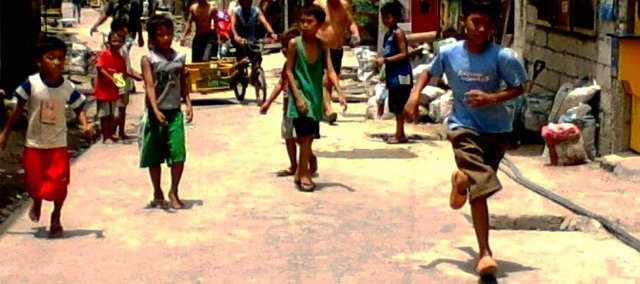Araw-Lilim - A Traditional Philippine Game

Today, I am featuring Araw-Lilim, one of the Traditional Games in the Philippines, my dearest country. I will highlight one game for each post. How about we attempt to review the games we played when we were kids, when we all have the strength and time on this world.
It is fundamental for us to know and at any rate recall what we basically have in our country. Culture describes us, and these games are a bit of our lifestyle. Isn’t it?
The Culture

Some times before iPad, Xbox, and PSP barraged us with outwardly dazzling recreations, we were simply basic children playing basic toys. In those days, a gathering of youngsters could undoubtedly discover approaches to kill time by utilizing sheer inventiveness, quality and eagerness. From do-it-without anyone's help paper balls known as "touch ball" to energizing gathering recreations that don't require toys like Luksong Baka, Luksong Tinik, Patintero, and Tagu-taguan, we never ran short of fun activities.
This post means to aim one of the fascinating Traditional Games in the Philippines to our present age. Our customary games speak to a piece of our culture and ought to never be overlooked. Regardless of how dynamic we are or how bustling our timetables might be, let us recover those occasions when fun was found outside and in blending with other individuals. Give us a chance to keep the soul of Pinoy games alive for the ages to come.
Araw-Lilim

Araw-Lilim (Day and Night/Sun and Shade) is a running diversion with a curve. It requires 10 or 20 individuals and is in a perfect world played at whatever point there's a light and shade (i.e. amid sunny days).
Set up:
• Selection of the "taya/tagged/tagger" (the catcher)
• Formation: All the players, with the exception of the "taya" rush around searching for a shade
Let the game begin…

The "taya" yells, "Game!" and races to tag any player not found under a shade. The tagged player turns into a new "taya" of the next game’s round.
The tagger (taya) tries to touch whoever is in the light. On the off chance that touched, the player turns into the new tagger in the next game. To abstain from being tagged, a player can remain in the shade. So it's simply an indistinguishable splendidly from the principal "taya".
The "taya" may play the possum and shroud quickly to influence the players under the shade to leave their frightful and search for him. At the point when a significant number of the players are out in the outdoors, the "taya" abruptly runs out and tag the player nearer to him
For numerous players, at least two individuals are generally allocated as taggers to make the diversion much additionally energizing and fun.
Note : to help a player who still has not discovered a shade yet when the "taya" begins the game, a few players may attempt to divert the "taya" by coming up short on the asylum of their own shade, at that point surge back for security.
This specific game might be or not recognizable to you, yet giving them a shot—regardless of whether you're not a child any longer—wouldn't be so awful. Also, the child within you will in the long run come up when the fun starts.
Photocredits: 1 2 3
Sources:
http://larong-pinoy.weebly.com/all-traditional-filipino-gamescompilation.html
https://en.wikipedia.org/wiki/Traditional_games_in_the_Philippines#Other_advocates
My Previous Traditional Philippine Game Post:
Agawan Base - A Traditional Philippine Game
Sekyu Base - A Traditional Philippine Game

Your Voice Matters!
If you haven't cast your vote yet, please support @surpassinggoogle and @cloh76 by voting @steemgigs and @cloh76.witness at https://steemit.com/~witnesses on the first box as your witness.
Live to Love! Love to Live!
Do No Harm! I'm a Lover of Fun!


